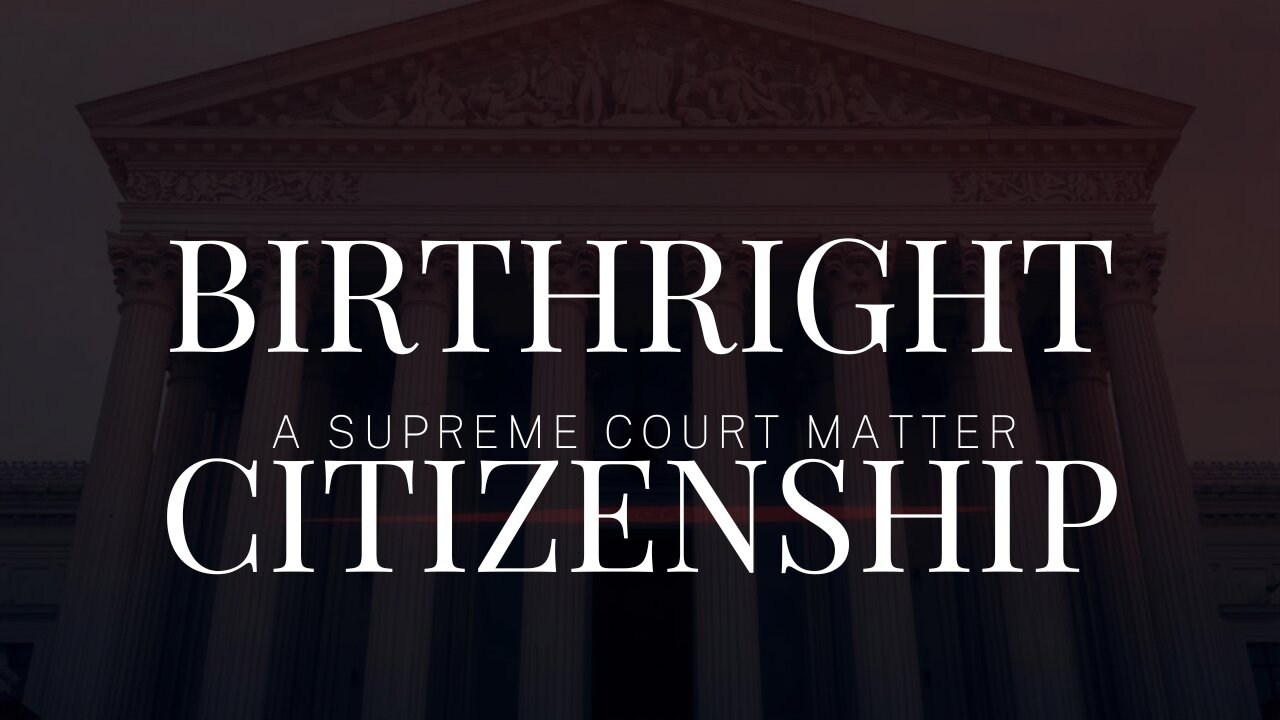The low birth rate phenomenon in the civilized world is worse than ever. Two months ago the Centers for Disease Control and Prevention (CDC) pegged the Total Fertility Rate in the United States at 1.6. That’s the lowest on record that it’s ever been – and those records go back to the 1930s. Explanations for this are probably as many and varied as the ones offering the explanations. CNAV sees it as further evidence of a deliberate depopulation agenda at work. But reversing of these trends will not happen easily. That will require an immediate change of leadership in America, and a commitment to restoring conditions conducive to a high birth rate. And, contrary to depopulation propaganda, America will have plenty of room – once we reopen certain tracts to human settlement, and regain control of our borders.
Latest low birth rate reports
Two new sets of numbers exist to estimate the Total Fertility Rate in the United States today. Total Fertility Rate (TFR) is commonly the number of children a woman might have during her childbearing years. Replacement level is that TFR level at which each succeeding generation will exactly replace itself. That level varies with living standards and a continuum of social state, from law and order to total disorder. In lawful and ordered societies it is typically 2.1, to replace:
Two adults who will eventually die, representing mothers and fathers, and
The one infant in ten who dies before he or she has a chance to sire, or bear, children.
In less ordered societies that replacement levels, is higher. So quoting TFRs from central Africa, without quoting replacement levels, would be misleading.
According to the CDC’s recent Vital Statistics Rapid Release Report, the TFR in the United States in 2023 was 1.6. But according to World Population Review, it stands at 1.84. Either rate is below replacement. The CDC examines United States birth records and Census data, while WPR takes its data from the World Bank. Why the World Bank should be reporting higher TFR numbers than CDC sources, begs explanation. But the CDC reminds its readers that their estimates are provisional.
Some birth rates higher than others
In any event, this low TFR is not uniform. It varies with race, socioeconomic status, and maternal age. Asians have the fewest children, with Native American and Alaskan native (Inuit, Aleut, etc.) having a few more. Whites come next, and Blacks, Hispanics, and Native Hawaiian and other Pacific Islanders have the most. All rates declined from 2022 to 2023, with Black and White women’s rates declining more sharply than the rest.
WPR also breaks down raw birth rates (not TFR) by State and territory. Sadly, WPR has no data any more recent than 2021. But as was true two years ago, the States having conservative governance have the higher birth rates. North and South Dakota lead, while Vermont, Rhode Island, and Oregon trail. Of course, the extra Hispanic population in Texas might (at first glance) drive a higher TFR in Texas. (Texas ranks fourteenth in raw fertility.) But the conservative mind-set of Texas, and the extra room the State has, might be the real drivers.
Idaho, incidentally, ranks twelfth, and Oregon ranks third from the bottom. Thirteen counties in Oregon, all east of the Cascade Mountains, have voted for the Greater Idaho movement. That movement seeks to recruit seventeen counties to secede from Oregon and join Idaho. Those counties are among the most sparsely settled in all of Oregon. Secession would bring a more family-friendly legal and law-enforcement climate. And the residents of those counties already have a lot of room to “fill up.”
Why the low birth rate?
Two separate sources offer to explain the low birth rate as the CDC reported it. One is “Live NOW from Fox,” apparently a nationwide aggregator from Fox Broadcasting stations. The other is The Wall Street Journal, as quoted by Leo Hohmann.
Live NOW from Fox barely offers any explanation. But they do quote surveys saying couples would like to have two or more children. But the costs and availability of housing, lack of job security, and “cost of child care” stop them. The women who are having babies, are having them later in life – often into their forties. That – as all medical students learn – carries with it risks of Trisomy 21 (“Down’s syndrome”) and other hereditary abnormalities. Fox quotes Nicholas Mark of the University of Wisconsin as suggesting that more than mere postponement is happening. In other words: complete cancellation of childbirth.
Hohmann seems to accuse the Journal of writing an uneven story. According to him, the Journal cites “women establishing fulfilling careers.” They also cite women spending their money on establishing themselves as homeowners rather than renters, and servicing student debt. Then Hohmann quotes a glaring inconsistency he might have missed. The Journal says young women are putting off motherhood – while also spending more income on child care. Where the children come from, who require child care, begs explanation. Sloppy writing? Hohmann doesn’t say.
Hints at the real explanation
But Hohmann does quote another source that is not only better written but is also simpatico with conservative ideals – The Burning Platform. Guest author Antonius Aquinas left this treatment on that platform yesterday. Commenting on the Journal findings, he writes:
The reasons that The Journal and other commentators give to explain the decline in birth rates are the consequences of what took place in America and the Western world decades ago. Leftists had always wanted to break down and corrupt the traditional family. A splintered and dysfunctional family structure would be less likely to act as bulwark against its agenda.
One of the ways to accomplish this was to get women out of the household and into the labor market, as working and career women would have fewer opportunities to have children.
Blame that, in large part, on the Second World War. When all able-bodied men went off to fight Hitler, Hirohito, and Mussolini, the women, left behind, kept the factories going. What seemed such a good idea at the time gave the feminist movement an entering wedge. After the war, the feminists complained that the women were “retrogressing into … that thing known as The Home.” But despite the never-again-equaled prosperity of the Fifties, the women didn’t stay in The Home. Aquinas writes on:
The feminist movement was more than just the attainment of “equal rights” for women. Its main objective was to lead women out of the home and away from their traditional roles as mothers and homemakers. The record drop in birth rates demonstrates how well this plan has been accomplished.
In fact The Baby Bust began in or about 1970, and TFRs have been declining ever since, with few exceptions. But that decline has not limited itself to the United States, nor even to The West. Russia and China have even lower birth rates than America has. China directly – and brutally – slammed down its birth rates, out of a fanatical desire for control. (And because the Party apparatus couldn’t feed their own people!) Russia stumbled through Communism, finally abandoning it after seventy years. But its fertility problems remain, despite well-meant but superficial measures to address them.
The core
Finally Aquinas strikes at the core of the low birth rate problem: the normalization of working women. It should not be normal, says Aquinas, for all women to aspire to work outside the home. True, some women must work, and others are simply not equipped, emotionally or psychologically, to be good mothers. A sound society finds a good place for them – but does not suggest that a woman who chooses not to work, chooses foolishly!
Both Hohmann and Aquinas decry the use of mass immigration to replace dead or never-born workers. But Aquinas offers a more detailed treatment:
While anti-immigration voices have rightly focused on the cultural and political altering impact of mass illegal immigration, there has been less emphasis on the fundamental change of women’s role in society. Such neglect is probably due to a reluctance to take a moral position and appear chauvinistic or misogynistic. A healthy birth-rate model could offset the influx of unwanted immigrants.
That reluctance comes about because no one teaches people that ethics can be just as logical as the natural sciences. To apply logic to ethics, merely ask yourself: Suppose we all did such-a-thing? What then? Too few people did ask: suppose all the women worked. What then? Who would take care of the children? Or even have them?
In fact, William S. Gilbert famously applied just such an exercise in logic in the operetta Princes Ida:
If you enlist all women in your cause, / and make them all “abjure tyrannic Man,” / The obvious question then arises: How / is this posterity to be provided?
Sadly, no one asked that question even when the government created “Rosie the Riveter” to urge women to work “temporarily.” Today, at best, we have Julie Christie as Linda Montag in Fahrenheit 451 (1966) saying what a “shame” it would be to let “the species” die out – and doing nothing to prevent that. At worst we have bitter women who don’t care – and elites who want the species, except themselves, to die out.
What might have been
Perhaps had America had a different President at a critical moment – in 1918, not 1941 – America could have avoided this. Without Progressivist Woodrow Wilson, the United States need never have entered the First World War. President Taft, in his second term, might have sternly advised all Americans to stay out of other people’s war zones, and off ships steaming into them. No American need have died aboard a ship named RMS Lusitania. America could and should have accepted German Imperial victory. With that victory, no one would have paid an obscure paper hanger named Adolf Hitler the time of day. For that matter, no one would have had to wheel barrows full of Reichsbanknotes worth millions of marks to buy a loaf of bread. Sadly, we’ve no reason to suppose that Russia would have avoided her Revolution. But even that would have concerned no one outside of Russia.
The rest of the implications become readily apparent. No Great Depression. Prohibition might have remained, and with it the Speakeasies – and the gangs – and finally the Saint Valentine’s Day Massacre, which could have led to another moral awakening as the consequences of wanton lawlessness – and disrespect for the very idea of law – played out. But: no Kellogg-Briand Pact, no hemming-in of Japanese shipbuilding – and no Pearl Harbor. Therefore: no Rosie the Riveter.
That might have required a reckoning, not with the gangsters, but with the bank-sters. But that’s another topic.
Treatment of the low birth rate
But one must deal with what one faces. Today we face a low birth rate across the board, and few ideas on how to reverse it. Elon Musk has definitely observed that we either reverse it, or die out as a species. But as Aquinas points out, even he doesn’t know how to reverse it.
Aquinas knows, and calls for:
a reordering of society to its natural state and restoring the family as a fruitful and nurturing institution for child rearing.
To bring that about, start by re-electing Donald J. Trump as President. The feeble but bitter Joe Biden would rather see the species die out. Trump at least is family-friendly.
Beyond that, the problem requires more than “restoring the family.” It requires restoring the rest of society as a mega-institution friendly to families. That starts with no more tolerance for abortion (except only to save a maternal life), and no more tolerance for the recruitment of children into the Alphabet Soup lifestyle. (It also might require hard thinking about the kind of signals parents send their children. Alphabet Soupers are not born; they’re made, and careless parents, even more than nefarious teachers, do the making.)
It continues with husbands discovering that part of Paul of Tarsus’ Letter to the Ephesians they all missed:
Husbands, love your wives, just as Christ also loved the church and gave Himself up for her.
Ephesians 5:25, NASB
It also calls for repealing Malthus’ Iron Law of Wages. Malthus missed one thing: employers set wages, and landlords set rents. Typically they set them at the “desperation” level and keep them there. Employers especially should remember this verse:
And [bosses], do the same things [for the members of your workforces], and give up threatening, knowing that both their [Boss] and yours is in heaven, and there is no partiality with Him.
Ephesians 6:9, NASB (paraphrased)
The enemy remains
One thing more remains to consider. Leo Hohmann mentioned one Dennis Meadows, author of The Limits to Growth (1972), who recently talked of reducing population “peacefully.”
Does Meadows actually believe that a bloody war over scarce resources could break out, without a mutual depopulation pact? Maybe – or maybe not. Actually, Meadows just threatened everyone: abstain from childbearing voluntarily, or we are prepared to kill you all. Indeed CNAV has discussed that depopulation agenda before. Likewise, Hohmann has mentioned an apparent objective of the WHO Pandemic Treaty: to tax wealthy countries to build vaccination centers in poor countries. Even Hohmann understates the implications. Citizens of those “wealthy countries” should object to such a tax, not because it would redound to the unearned, unpaid benefit of those “poor countries.” Indeed this program would do those poor countries no favors. Ask, rather, whether you care to have your government expropriate your substance – to go out and commit mass murder. Especially when you may be next.
And remember that growth has no limits. Even apart from Elon Musk’s grand schemes to create a “multiplanetary civilization,” this Earth has plenty of room, if we use that room wisely. Don’t let a bunch of cynical, misanthropic struldbrugs tell you otherwise.
Link to:
The article:
https://cnav.news/2024/06/05/editorial/talk/low-birth-rate-latest-report/
Video:

The CDC Report:
https://www.cdc.gov/nchs/data/vsrr/vsrr035.pdf
Dennis Meadows interview:
Declarations of Truth X feed:
Declarations of Truth Locals Community:
https://declarationsoftruth.locals.com/
Conservative News and Views:
Clixnet Media























